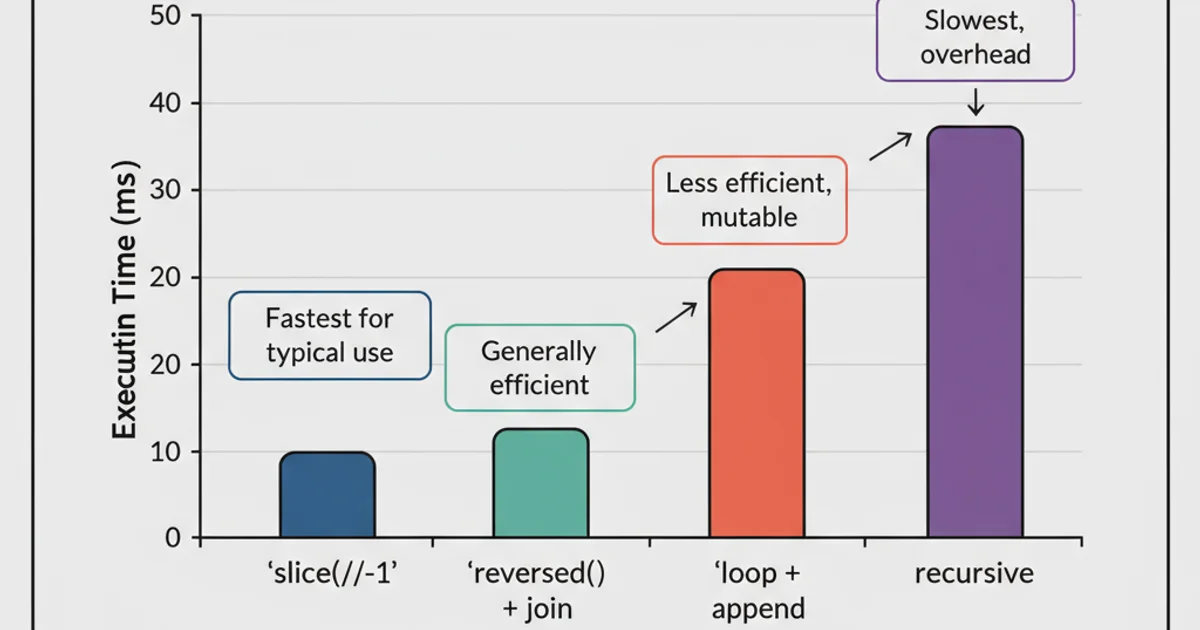How do I reverse a string in Python?
Categories:
Mastering String Reversal in Python: Techniques and Best Practices

Explore various methods to reverse a string in Python, from simple slicing to more advanced techniques, understanding their efficiency and use cases.
Reversing a string is a common programming task that can be approached in several ways in Python. Whether you're preparing for a coding interview, manipulating data, or just curious about Python's string capabilities, understanding these methods is crucial. This article will guide you through the most popular and efficient techniques, providing code examples and insights into their performance.
Method 1: Slicing (The Pythonic Way)
Python's string slicing feature offers an incredibly concise and readable way to reverse a string. This method leverages the [start:end:step] syntax, where a step of -1 iterates through the string backward.
my_string = "hello"
reversed_string = my_string[::-1]
print(reversed_string) # Output: olleh
Reversing a string using Python's slicing feature.
Method 2: Using reversed() and join()
Another robust method involves using the built-in reversed() function in conjunction with str.join(). The reversed() function returns an iterator that yields characters in reverse order, which can then be joined back into a string.
my_string = "world"
reversed_string = "".join(reversed(my_string))
print(reversed_string) # Output: dlrow
Reversing a string using reversed() and join().
flowchart TD
A[Start] --> B{Input String}
B --> C["reversed() function"]
C --> D["Iterator of reversed characters"]
D --> E["str.join('') method"]
E --> F[Reversed String]
F --> G[End]Workflow for reversing a string using reversed() and join().
Method 3: Loop-based Reversal
For those who prefer a more explicit approach or need to understand the underlying logic, a simple loop can be used to build the reversed string character by character. This method is less 'Pythonic' but demonstrates fundamental string manipulation.
my_string = "python"
reversed_string = ""
for char in my_string:
reversed_string = char + reversed_string
print(reversed_string) # Output: nohtyp
Reversing a string using a for loop.
reversed() because it involves repeated string concatenation, which can create many intermediate string objects.Performance Considerations
When choosing a method, performance can be a factor, especially with very large strings. Generally, slicing and reversed() are optimized C implementations and tend to be faster than manual loop-based concatenation. For most practical applications, the difference is negligible, and readability should be prioritized.

Conceptual performance comparison of string reversal methods.